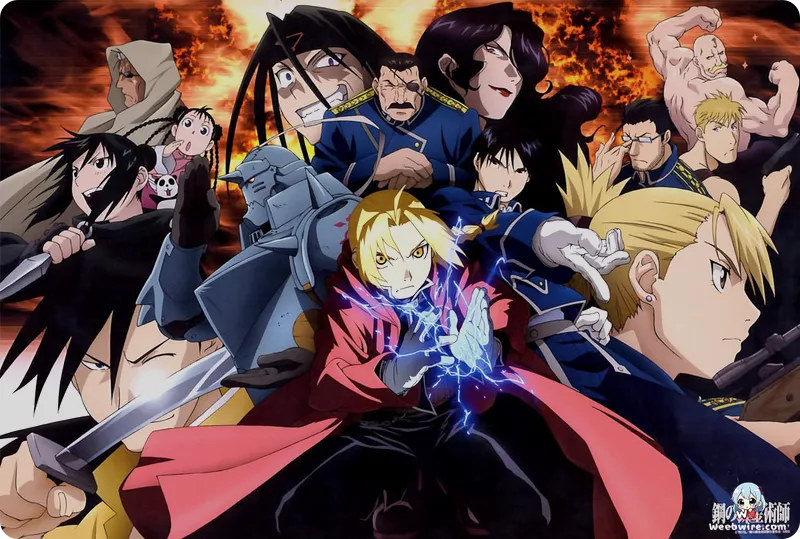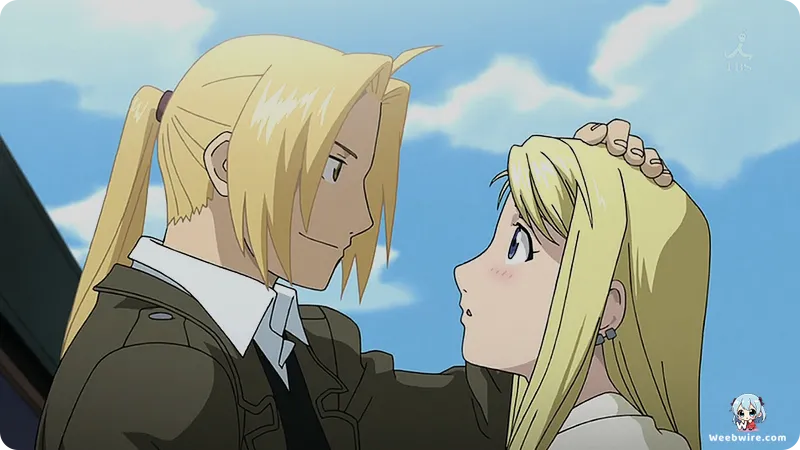Unveiling the Hidden Depths: Fascinating Facts Behind Fullmetal Alchemist: Brotherhood's Enduring Legacy

Fullmetal Alchemist: Brotherhood has long been celebrated as a cornerstone of animated storytelling. Its complex narrative, unforgettable characters, and profound philosophical underpinnings have secured its status as a modern classic. Beyond its undeniable appeal, a wealth of captivating behind-the-scenes facts and deeper insights often remain hidden, enriching the already intricate tapestry of this beloved series. These revelations not only illuminate the creative genesis but also deepen our appreciation for the extraordinary craft that brought Hiromu Arakawa's original manga to vibrant life.
The Genesis of a Masterpiece: A Second Adaptation
Central to its unique legacy is the very existence of Fullmetal Alchemist: Brotherhood as the second anime adaptation of Arakawa's seminal work. The initial 2003 Fullmetal Alchemist series, due to the manga's ongoing serialization, ultimately charted its own distinct narrative course. While that adaptation garnered its own devoted fanbase, the announcement of Fullmetal Alchemist: Brotherhood in 2009 ignited immense excitement among fans. They yearned for an adaptation that would meticulously follow the manga's complete story, character arcs, and definitive conclusion. This unwavering commitment to Arakawa's original vision, a rare feat in an industry often prone to creative detours, speaks volumes about Studio Bones' dedication and the production committee's resolve to deliver the ultimate animated rendition of such a globally cherished manga.
Hiromu Arakawa's Influence: From Farm to Fantasy
Further adding to the series' allure is the remarkable background of its creator, Hiromu Arakawa. Raised on a dairy farm in Hokkaido, Japan, Arakawa's formative experiences instilled a formidable work ethic and a pragmatic worldview. These qualities conspicuously echo in protagonists like Edward and Alphonse Elric. Her iconic self-portrait, a bespectacled cow, serves as a charming nod to her agricultural roots. This grounded upbringing, though seemingly distant from the fantastical realm of alchemy, profoundly shaped her perspective on diligence, familial bonds, and the fundamental cycles of existence. These themes resonate with powerful clarity throughout the series. Arakawa's active involvement in Fullmetal Alchemist: Brotherhood, offering crucial feedback, ensured the anime remained steadfastly true to her artistic intentions and the integrity of her meticulously crafted narrative and character portrayals.

Symbolic Depths: The Weight of a Pocket Watch
Beyond its thrilling action and adventure, Fullmetal Alchemist: Brotherhood masterfully integrates subtle symbolic details that imbue its narrative with profound meaning. Consider the pocket watches carried by State Alchemists. More than mere timepieces, they bear the chilling engraving of a lion devouring a snake, the Ouroboros, symbolizing cyclicality. They also feature the haunting inscription, "Don't Forget 3. Oct. 11." This date marks the Elric brothers' forbidden attempt at human transmutation, a perpetual, heavy reminder of their past transgression and the steep price exacted. This seemingly minor detail powerfully underscores the immense burden shouldered by State Alchemists, entangled not only in military obligations but also in the inherent moral ambiguities of their power and past deeds.
Philosophical Underpinnings: Equivalent Exchange and Beyond
The series also courageously navigates complex philosophical and ethical quandaries. The immutable law of Equivalent Exchange, "mankind cannot gain anything without first giving something in return," transcends a simple alchemical rule. It serves as a pervasive metaphor for sacrifice, consequence, and the universe's delicate balance. This principle permeates not only magical transmutations but also the grim realities of war, personal devastation, and societal constructs. The Ishvalan Civil War, for instance, offers a visceral depiction of real-world ethnic cleansing and systemic oppression. It starkly illustrates the devastating 'exchange' of lives and innocence for political power and prejudice. The nuanced portrayals of characters like Scar, a vengeful war survivor, and Roy Mustang, haunted by his actions, exemplify how Equivalent Exchange applies to moral debts and the profound cost of conflict, elevating the series far beyond typical shonen fare.
Thematic Naming: The Homunculi and Seven Deadly Sins
Even the naming conventions within the series are laden with significance. The Homunculi, for example, are each named after one of the seven deadly sins, perfectly embodying their dominant characteristic and narrative function. Pride, the formidable first Homunculus, epitomizes arrogance; Lust, carnal desire; Gluttony, insatiable hunger; Wrath, uncontrollable fury; Sloth, extreme indolence; Envy, bitter resentment; and Greed, the relentless pursuit of possessions. This thematic naming offers immediate insight into their personas, linking them to universal human vices and adding a layer of classical allegorical depth to the antagonists. Such clever shorthand enriches the narrative without requiring extensive exposition for each character.
Fullmetal Alchemist: Brotherhood's enduring popularity stands as a testament not only to its compelling story but also to the meticulous world-building and profound character development that secure its timeless appeal. These previously lesser-known facts and deeper insights only fortify its standing as a landmark anime, continuously captivating new audiences and offering seasoned fans fresh avenues for appreciation. It remains a series that generously rewards repeated viewings, revealing new layers of meaning and detail with each watch, solidifying its place as a truly unforgettable journey into the heart of humanity and the relentless pursuit of truth.
Credits
Fullmetal Alchemist: Brotherhood
Author
Hiromu Arakawa
Cover Art
Hiromu Arakawa
Studio
Bones
Publisher
Square Enix
Producers





